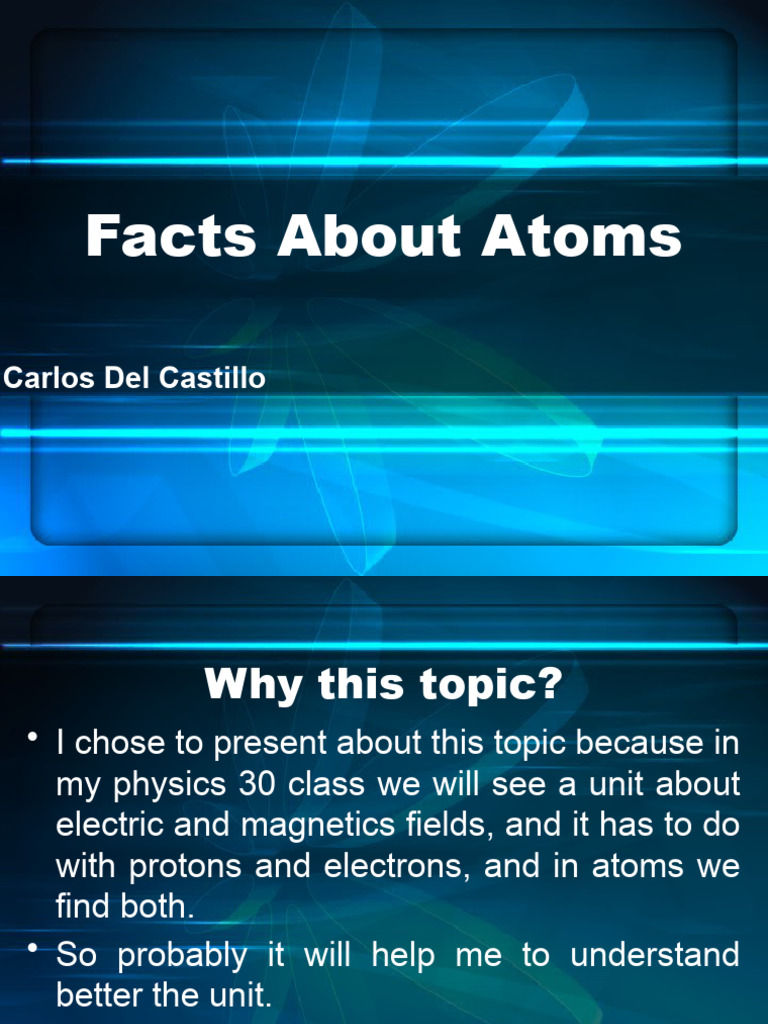Atoms are the building blocks of matter, but beyond their fundamental role in the universe, they hold secrets that are often relegated to the obscure corners of scientific literature. Such is the nature of atomic science—a realm where the everyday and the extraordinary coalesce. Have you ever pondered what lies beneath the surface of these minuscule entities? With this inquiry in mind, let us explore some uncommonly known facts about atoms that may challenge our comprehension and appreciation of the elemental constituents of existence.
1. Atoms Are Mostly Empty Space
Consider the conventional notion of solidity. It is intriguing to realize that, largely speaking, atoms are composed of empty space. The nucleus—a compact core made up of protons and neutrons—occupies an infinitesimal fraction of the atomic volume. Surrounding this nucleus is a cloud of electrons, engaged in frenetic movement. If you were to scale an atom up to the size of a stadium, the nucleus would resemble a marble at its center, while the electrons would be spread out in a vast orbit. This begs the question: if atoms are predominantly void, what gives matter its tangible characteristics?
2. Atoms Can Experience Quantum Superposition
Diving deeper into atomic behavior, we find atoms can exist in a state of quantum superposition. This phenomenon implies that an atom can occupy multiple states simultaneously until an observation or measurement is made, collapsing it into a single state. This peculiar characteristic is not merely fodder for science fiction; it underpins many cutting-edge technologies, such as quantum computing. The thought of an atom ‘deciding’ to be in multiple places at once might unsettle some. Yet, it opens the door to the challenge of reevaluating our understanding of reality itself.
3. The Concept of Atomic Identity Is Challenged by Isotopes
Most people might proudly state that they understand the elements on the periodic table. However, the concept of isotopes introduces fascinating complexities. While isotopes possess the same number of protons, they vary in their neutron count. Consequently, their atomic mass differs, affecting their stability and radioactive properties. For example, carbon-12 and carbon-14 are isotopes of carbon; the former is stable, while the latter is radioactive and plays a crucial role in radiometric dating. This nuanced identity challenges the paradigm of what we consider a “pure” element, inviting inquiries into the very nature of chemical identity.
4. Atoms Can Form Bonds Beyond Traditional Chemistry
When discussing atomic interactions, one might typically consider covalent or ionic bonds. However, atoms can also engage in more intriguing forms of bonding. For instance, metallic bonding occurs through the delocalization of electrons, allowing atoms to share electrons in a ‘sea’ of charged particles. Additionally, atoms can participate in hydrogen bonds, crucial yet relatively weak interactions, which govern the unique properties of water and biological molecules. The concept of transient bonds adds a layer of complexity to our understanding of molecular structures—could our perception of atomic stability be fundamentally misleading?
5. Atoms Are Inexorably Linked to the Universe’s Age
The atoms we are formulated from are ancient, originating from events like supernova explosions. It is estimated that the atoms populating our bodies have traversed through various forms over billions of years, encompassing the cosmic lifecycle. Each atom has a story, a journey that encapsulates the history of the universe itself. This brings forth a pertinent challenge: if we are, quite literally, made of stardust, how phenomenal are our connections to the cosmos?
6. Atoms in a Laser Emanation Are Musical
In a rather poetic twist, one can consider the vibrations of atoms as a form of music. When atoms are subjected to stimulation, such as in a laser, they can emit specific frequencies of light, akin to musical notes. This phenomenon is pivotal in fields such as spectroscopy, where the emitted light provides insights into atomic compositions and interactions. The beauty of this ‘atomic orchestra’ may compel one to realize how reminiscent human experiences can mirror atomic behavior, suggesting an underlying harmony in nature.
7. Atoms Can Influence Biological Processes
A deeper dive into biochemistry reveals an extraordinary fact: the behavior of atoms facilitates the complex machinery of life. The crucial roles of transition metals, such as iron in hemoglobin or zinc in enzyme activity, illustrate how atomic interactions underpin biological function. The astonishing diversification of life hinges on atomic structure and bonding characteristics, hinting at a biochemical interconnectedness. Exploring how an atom’s disposition can dictate biological outcomes challenges assumptions about life’s simplicity—could understanding atomic interactions unlock the keys to designing innovative medical therapies?
8. Atoms Exhibit Anomalous Magnetic Behavior
The magnetic properties of atoms present another dimension of intrigue. While one might imagine magnets solely as macroscopic objects, the spin of electrons in atoms can render them intrinsically magnetic. This property is crucial for technologies such as magnetic resonance imaging (MRI) and data storage devices. The phenomenon of ferromagnetism, where certain materials can retain magnetic characteristics, poses the challenge of understanding how atomic configurations govern large-scale properties—what implications might this have for future technological advancements?
In summary, the realm of atoms is replete with curiosities and complexities that challenge our conventional understanding of the physical world. The unspoken narratives within these subatomic particles expose an intricate tapestry of interactions, which influences not only our material existence but also the very fabric of the universe. As we continue to unveil these mysteries, one might find themselves enmeshed in a playful yet profound contemplation of what it truly means to be made of atoms.












